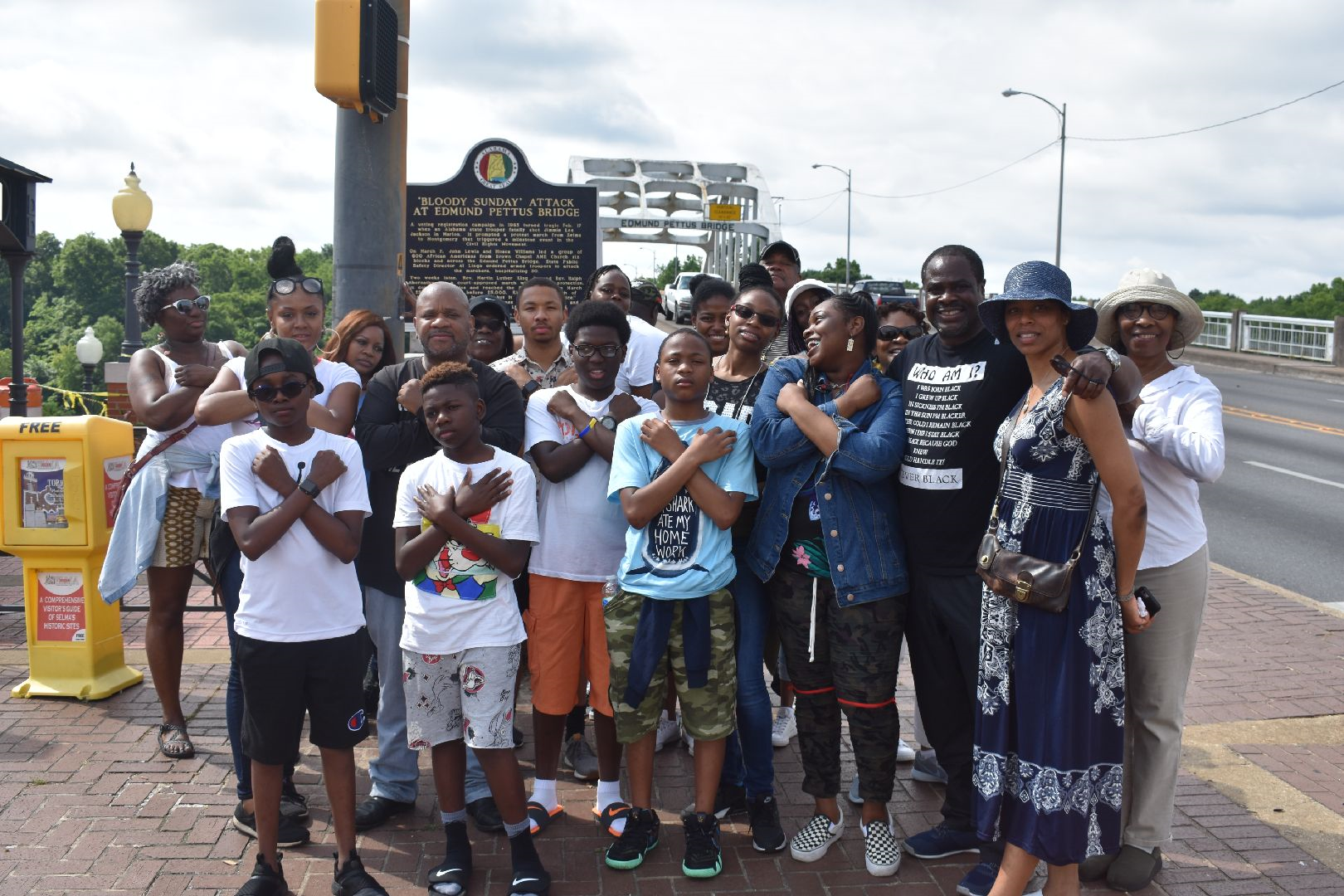Education
Rediscovering Lost Values: Lessons Learned at Edmund Pettus Bridge

The Alabama sun beamed down on the Rediscovering Lost Values Tour while my father, Rev. W. Taharka Robinson, prepared our group to march across the Edmund Pettus Bridge by providing us with a history lesson. This lesson illustrated the brutality and evil our ancestors knew they would face and encountered while marching across the bridge for the right to vote.
On March 7, 1965 in Selma, Alabama, now U.S. Congressman John Lewis, Andrew Young and Hosea Williams stood at the foot of the Edmund Pettus Bridge and prayed before the people began to peacefully march across to exercise their constitutional right to vote. Alabama State Troopers stood at the other side of the bridge with clubs and tear gas. As the people marched, they were told to stop marching but they did not. Our ancestors were determined to obtain the right to vote and were willing to die for it, so they continued. As they marched, State Troopers brutally attacked, trampled and shot tear gas at them. This brutality was captured on television and outraged the world. A few days later on March 9, 1965, Dr. Martin Luther King, Jr. organized a march across the Edmund Pettus Bridge. As he approached, he saw an Army of State Troopers, kneeled down to pray and turned around. The court was then petitioned for protection to protest & march across the bridge. On March 21, 1965, the National Guard protected the people as they marched across the Edmund Pettus Bridge to Montgomery, Alabama. Marchers walked 12 miles a day and slept in fields and reached the Alabama State Capitol on Thursday, March 25, 1965. By this time, they were 25,000-strong. Less than five months later, President Lyndon Johnson signed the Voting Rights Act of 1965.
As I walked across the Edmund Pettus Bridge, I felt very honored that my ancestors thought enough of themselves and future generations to fight for the right to vote. They were determined and did not allow racism, intimidation, brutality or injustice to prevent them from moving forward and accomplishing their goal. They persevered! I am personally inspired by my ancestors and hope that all African-Americans honor them by voting.
Nia Robinson, 14, Medgar Evers Preparatory School
Who was Edmund Pettus?
After Reverend W. Taharka Robinson gave us a history lesson on the significance of the Edmund Pettus Bridge and the events that led to the 1965 Voting Rights Act, the Rediscovering Lost Values Tour walked across the bridge singing “We Shall Overcome.” Once the singing stopped, Kylen asked, “Who is Edmund Pettus?” Edmund Winston Pettus was born in Limestone County, Alabama in 1821. He was a lawyer, Confederate general, Grand Dragon of the Ku Klux Klan and a U.S. senator. Edmund Pettus supported the Confederacy and believed in white supremacy. The bridge was named after him 33 years later after he died.
Once I returned to the hotel in Montgomery, I quickly typed Edmund Pettus’ name into Google and was surprised to read who he was. My initial thoughts were how could a bridge be named after such a man. He endorsed slavery, terror, brutality and racism. As I researched more, I read several articles justifying his name on the bridge. Most of the articles stated that the Edmund Pettus name on the bridge is not glorifying or endorsing the man but it represents an event in history that changed the world.
A common issue today is renaming statues and monuments that represent racism and oppression. When I think of the Edmund Pettus Bridge, I think of “Bloody Sunday,” a time where my ancestors were attacked by police, shot with tear gas and were brutally beaten because they (peacefully) marched for justice, progression and change (voting rights). Edmund Pettus was not a unifier, he believed in white supremacy and was a leader of the Ku Klux Klan. Should any bridge or structure be named after a man with a background like Edmund Pettus, a man who most likely would not have supported the march or the Voting Rights Act? In my opinion, NO!
Skye Matthews, 14, STAR Early College at Erasmus


